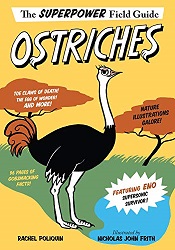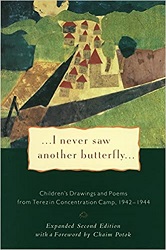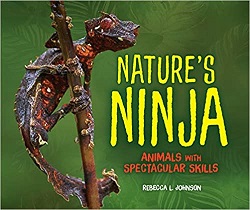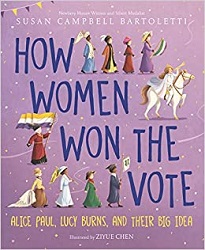Review of Mother Jones and Her Army of Mill Children, by Jonah Winter, illustrated by Nancy Carpenter
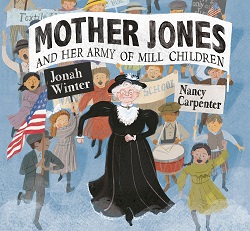 Mother Jones and Her Army of Mill Children
Mother Jones and Her Army of Mill Children
by Jonah Winter
illustrated by Nancy Carpenter
Schwartz & Wade Books, 2020. 36 pages.
Review written February 27, 2020, from a library book
Starred Review
The topic of this picture book biography stirred me up besides telling me about someone I hadn’t known much about. Mother Jones – Mary Harris Jones – was the “grandmother of all agitators.” She spoke out strongly against oppressive labor conditions, and especially about child labor. The title and the focus of the book are about a Children’s March where she led mill children on a protest march from Philadelphia to New York City in 1903, which she called the Children’s Crusade.
The book is written in first person from Mother Jones’ perspective. Quotes from her speeches are used in a few places, and famous quotes are included on the endpapers. All caps are used in places to convey her anger at injustice.
Well, I’ve seen lots of things to get RILED UP about, but the worst thing I ever saw was in the fabric mills of Philadelphia. I saw children YOUR AGE – nine and ten years old – who worked like grown-ups, forced to stand on their feet for TEN HOURS STRAIGHT, tying threads to spinning spools, reaching their hands inside the dangerous machines that make the fabric, sometimes getting skirts caught, sometimes getting hair caught, sometimes hands or legs, working for hours and hours, never resting, breathing deadly dust – robbed of their childhoods, robbed of their dreams, and all for a measly TWO CENTS AN HOUR, while outside the birds sang and the blue sky shone.
The majority of the book is about the Children’s March. They didn’t stop at New York City, but marched on to the summer home of President Theodore Roosevelt on Long Island – where he refused to see them.
But the actions of Mother Jones ended up resulting in child labor laws that are still in effect today.
I liked that the artist used a dark palette for this book, with sobering pictures of the kids – as well as happier pictures, such as when the kids tried out the rides on Coney Island.
This book gives an important story, and I’m glad I learned about it. It’s told in a way that kids can appreciate a woman – and children – who made a big difference.
nancycarpenter.website
rhcbooks.com
Disclosure: I am an Amazon Affiliate, and will earn a small percentage if you order a book on Amazon after clicking through from my site.
Disclaimer: I am a professional librarian, but I maintain my website and blogs on my own time. The views expressed are solely my own, and in no way represent the official views of my employer or of any committee or group of which I am part.
What did you think of this book?
*Note* To try to catch up on posting reviews, I’m posting the oldest reviews I’ve written on my blog without making a page on my main website. They’re still good books.
